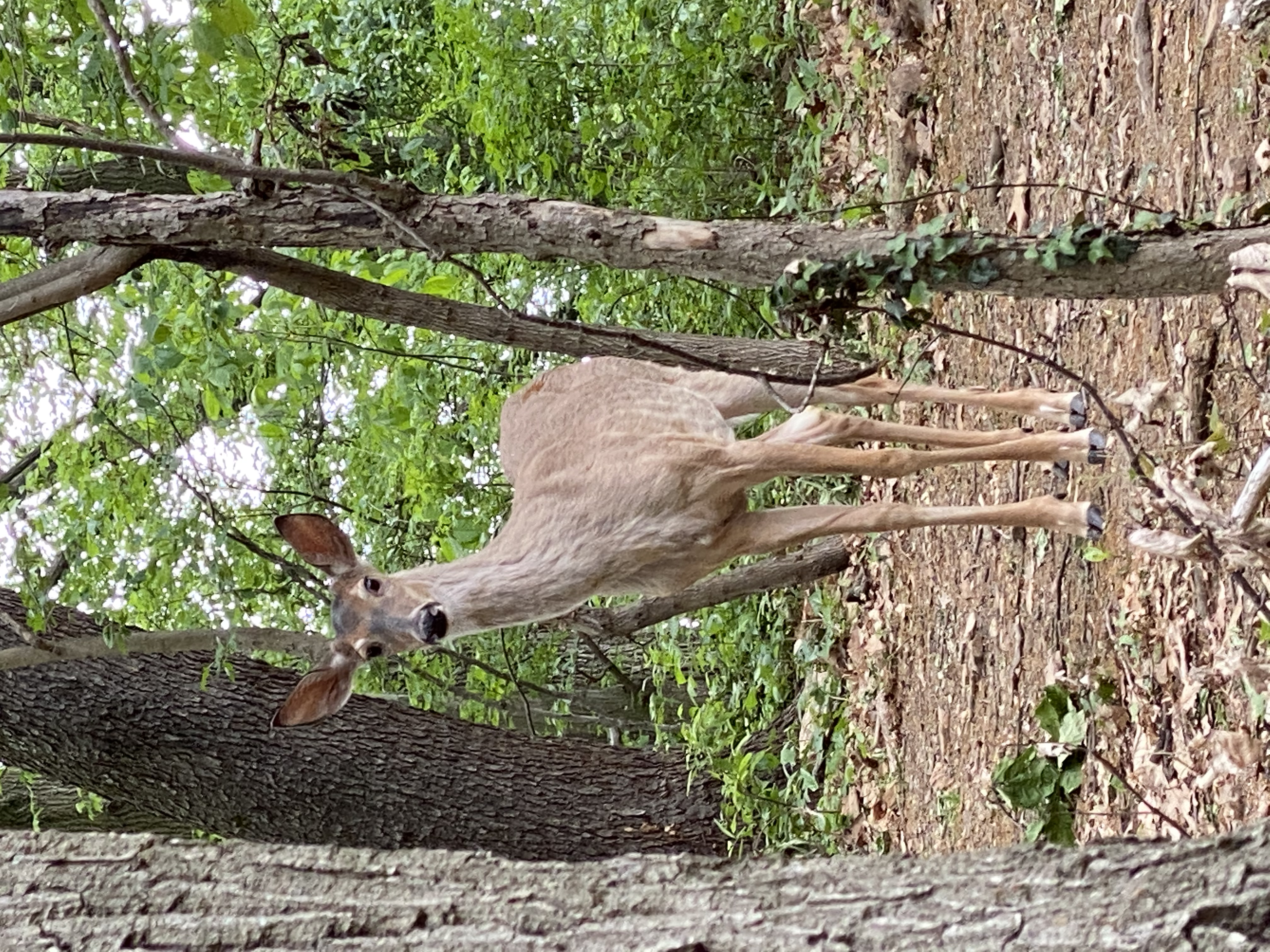
Tree Stewards of Arlington and Alexandria gave Brandymore Castle’s forest the greatest possible gift this month: A future canopy of robust black cherry, chestnut oak, and black gum trees with an understory of American holly and redbud augmented by blackhaw and arrowwood viburnum, pintxer azalea, and a hillside of Virginia creeper.
All of these native plants were already present around the Castle. And that’s the point: They naturally occur here. They’re native. For many moth and butterfly larva, these plants are home and sometimes the only food they can consume. These plants are crucial to the survival of small critters that we love to see, the bees that pollinate the food we eat, and the birds that breed and sing in springtime. To make sure their species will be here for generations to come, nearly 40 volunteer Tree Stewards, Arlington Regional Master Naturalists, Master Gardeners of Northern Virginia, neighbors, and the crews from Quetzal Lawn and Landscape devoted a Saturday to planting and protecting each plant from their main predators: White-tail deer and humans.
Nora Palmatier, a founder of Tree Stewards and former head of Arlington’s Urban Forestry Commission, explains:
Arlington Urban Forester Melissa Gildea worked with [native plant nursery] Earth Sangha in choosing 128 trees and shrubs to block off [an unauthorized] path* and 50 Virginia creeper to stop one bank's erosion. We got these small plants in during the morning, and in the afternoon did the hardware part, along with [English] ivy removal.
Tree Steward Doug Dickman was in charge of [plant protection]. He and Melissa brought [previously used and reusable] plastic tree tubes, short and large wooden stakes, bundles of wire, plastic deer guards, etc. from the Trades Center and County Nursery. You can see Doug securing a plastic tube with a large stake and other photos of the heavy wire staked down to close an unauthorized path. [We plan] a large enclosure of chicken wire surrounding the steep bank where Tree Stewards struggled to plant the 50 Virginia creeper. It will be a learning experience over the next year to see which protective device is most effective at deterring deer and [people].
I don't know which of the following excites me most:
On behalf of Friends of Brandymore Castle, I am humbled and grateful for this generous donation of native trees, shrubs and vines as well as the hundreds of volunteer hours that led to and were expended on this event. It demonstrates real commitment to the present health and future stamina of our nearest forest and to the well-being of our future generations, human and otherwise.
Thank you, Tree Stewards, for tackling a multi-faceted issue with the verve to deliver results!
Here are some photos from the day-long event.



About that unauthorized path*: It’s probably not what you’re thinking. It’s not a trail carved by mountain biking enthusiasts, although there are several of those, many too steep to ever be considered “sustainable” by anyone. Wind and luck have dropped a trail-closing tree on one of the nastier biking trails, but we have been told that others will not be closed until after Arlington County’s contractor conducts a survey of all trails in our nearly 200 parks, reports results, there’s public comment, and various advisory commissions recommend actions to the County Board.
The unauthorized trail was unintended and emerged in March 2021 after a tree-cutting company drove its stump grinder from a backyard through most of the southern edge of Brandymore Castle and down to North Roosevelt Street after being advised against doing so by a concerned neighbor. The equipment left deep gouges and ruts in the park, plowed through an area where Park Stewards recently had planted tree saplings, and tore up the soil all along its route. The concerned neighbor called Arlington Urban Forestry, which required the offending company to repair the damage. Within the week, the ruts were smoothed and a heavy cushion of chipped wood mulch was laid on the path about 4 inches deep and 4 feet wide. This looked like a trail improvement to lots of pedestrians, who started using the mulched path instead of traditional dirt trails on the south side. Soon the mulch was worn down but spread even wider through what so recently had been an area filled with native plants, some unusual if not rare. In October, volunteers moved downed trees onto the path in an effort to discourage walkers, but Arlington Parks and Recreation staff decided to plant the “trail” full of new plants in an effort to end forays there.
If your favorite trail is now closed, this is why. Stay off the area. Walk only on previous dirt trails.
When we lose a foot to a widening trail, or even an inch, we will never get that foot or inch back in its original state. Compaction by all means—feet, bike tires, electric scooters, hoverboards, skateboards, pets, even baby carriages—will render soil unsuitable for many native plants that nurture the bugs, bees, and birds who constitute a crucial link in our food web.
So before you take a shortcut, creating a new trail or widening one that already exists, stop. Think about the damage you could cause. Then don’t do it.
Jo Allen
Park Co-Steward, Brandymore Castle
Author: Jo Allen
Published on: Nov 22, 2021, 6:26 PM